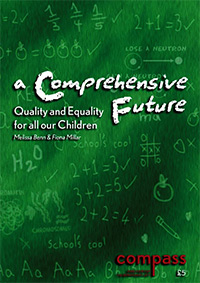When it comes to school funding, read the small print not the spin
Five months ago I wrote this column for Guardian Education and was chided by various friends and colleagues for being cynical about the overblown promise of a pupil premium and the effect it might have on schools in a risky, fluid school funding environment. Having followed the various, often conflicting versions of where school budgets might end up over the next few years, I am sticking to my original view.
Consider the facts, such as they are. The Department for Education is apparently facing massive cuts (estimated at around 25%). On Friday night we learned that the ‘schools budget’ would be protected. But what does this mean? School funding comes in different ways; via the dedicated schools grant, but also through other funding streams like the standards funds, money for extended schools, music, breakfast clubs, one to one tuition and other services for families and young people, not to mention capital funding which will still be needed to replace the doomed BSF project.
If the dedicated schools grant isn’t cut, but doesn’t increase at all, schools are likely to face real terms cuts. Even under Labour, Ed Balls’ promise to increase it by 0.7% year on year meant much less money than schools have been used to. If other funding streams are axed too, many schools could feel worse off; especially over the longer term since the Coalition’s recent consultation on school funding hinted that many of these grants will be subsumed into a single funding formula designed to ‘reduce the funding differences between schools in different areas’. This will almost certainly shift resources from urban areas with high deprivation (mostly Labour) and in to the shire counties (mostly Tory). There may also be changes in the rules which govern LA funding formulae.
Then there is the pupil premium. We still don’t really know how much this will be or how it will be funded, only that there is around £7 billion over four years. This will also have to pay for the early year’s education for two year olds that had already been promised by Labour and to try and offset tuition fees for poorer students. Chris Keates, general secretary of the NASUWT, bluntly suggested on Friday that this money would’ sink without trace in the gaping hole in the education budget’ left by the Comprehensive Spending Review cuts.
Even if it doesn’t disappear altogether, it could widen rather than narrow inequality because, as the Institute for Fiscal Studies was quick to point out on Friday, the amount of the pupil premium will differ between local authorities, depending on the funding each area currently receives. This is because the government believes that funding for deprived pupils is ‘spread more thinly’ in affluent areas than in areas of high deprivation. As a result they have decided that pupils in the relatively affluent areas should receive a higher pupil premium, and those in the poorer areas, a lower one.
However the IFS contests this assumption, claiming its own research shows that poor pupils in wealthier areas aren’t worse off and a differential pupil premium could mean a deprived pupil in relatively affluent Wokingham getting 2.5 times the pupil premium awarded to a pupil in an area of high deprivation like Tower Hamlets.
Luke Sibieta, a co-author of the report and a senior research economist at IFS, said: “The pupil premium proposed by the Government would be broadly progressive since more deprived schools have many more pupils who would attract additional funding. That the pupil premium should be higher in less deprived areas is hard to justify: it would widen inequalities in funding for deprived pupils, rather than reduce them. Attaching the same pupil premium to all disadvantaged pupils regardless of where they live would not only be simpler, it would also be more consistent with the Government’s stated objectives.”
One thing is clear though. We are heading into choppy waters, there will be winners and losers in this melange of funding cuts, new formulae and a variable premium for disadvantaged pupils, which may still be old money dressed up with a new name.
This may force some schools feel to look at academy status, as a way of bolstering their budgets at a time when a smaller cake is being cut in a different way. But even academy status brings risks. As this earlier blog points out, academies must assume a lot of extra running costs and the extra funds they receive will vary according to the central spend by their local authority. If that gets cut, so will the funds redirected to independent state schools, whose budgets will drop while maintained schools remain unaffected.
Meanwhile the YPLA, the agency through which academies are to be managed and funded, floats on and off the list of quangos to be axed. The recent funding consultation also talked of a new mechanism for financing academies.
My advice to schools remains the same as in June with one extra thought. Ignore the spin, this week in particular, read the small print and start talking to neighbours before making any major decisions, especially about changing status. It may be that collaboration, sharing of resources and the sort of large scale procurement advocated, dare I say it, by Sir Philip Green might be more sensible than thousands of individual schools, some very small, trying to go it alone at a time of great uncertainty.




